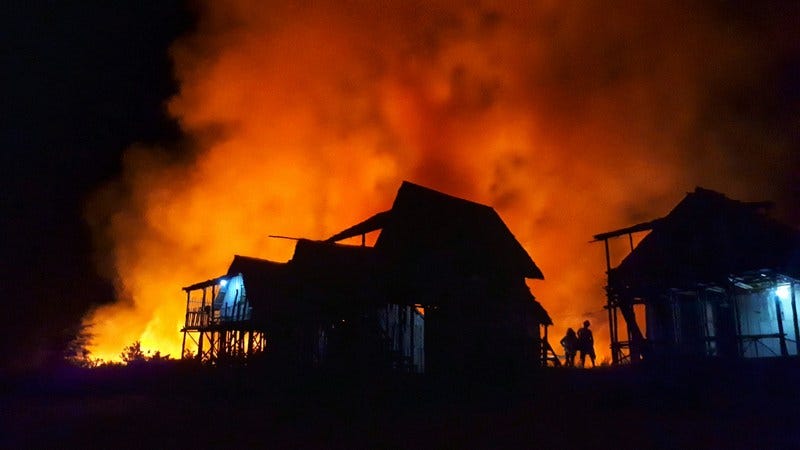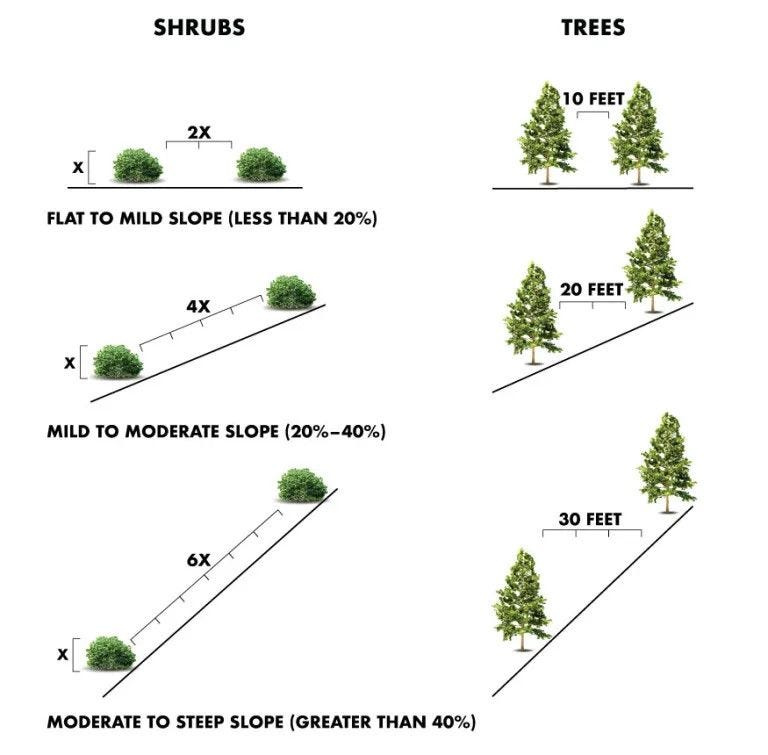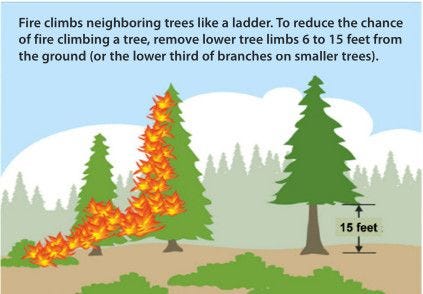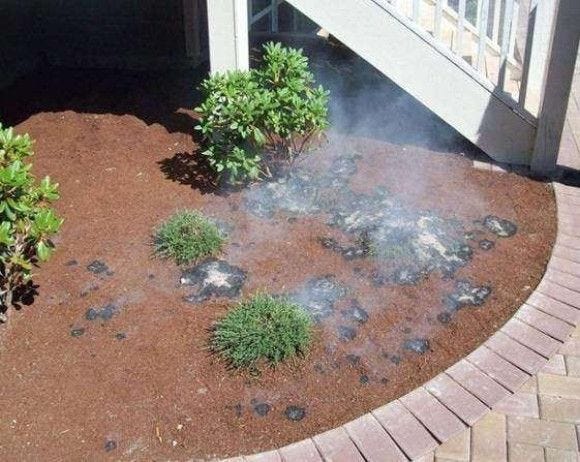As a Garden Designer practicing in Southern California suburbs, homeowners often ask me about making their landscaping resilient against wildfires. Even in homes that are not immediately adjacent to forests or grassland, the long hot and dry summers can create the perfect conditions for a fire to erupt from an errant cigarette or sparks from construction work. Here are some of the considerations for creating a fire-smart landscape.
Fire-Smart Plants
No plant is completely immune to the effects of fire, however there are some that are more flammable than others. That said, even the less flammable plants can be a fire danger if not properly maintained to remove dead branches or excessive leaf litter.
Fire-smart plants typically have one or more of the following characteristics:
Foliage is in the form of leaves, rather than needles (as seen on conifers).
Leaves are generally moist, easily crushed and do not have a strong odor.
Trees and taller shrubs have airy and not bushy foliage, and do not have dead wood or twiggy branches.
Shrubs that are low growing (<3ft / 0.9m) without too much dead material.
Sap is watery and has no strong odor.
Plants that retain water in their trunks (succulents).
It should be noted that using native plants is not necessarily a solution for fireproofing your yard, because some native plants in wildfire-prone regions are adapted to fire and need it to reproduce. Nonetheless, you should still be able to use some native plants but make sure they are not easily flammable. Depending on your location, there will be a list of plants that are less fire-prone and your local fire department may offer a list of fire-smart plants to aid in planning your landscaping. The Marin County Fire Department has created a useful list that is applicable to most gardeners in California. Your local fire department may also maintain a similar list. For other U.S. and Canada residents, if you have a Master Gardener available in your area, you can try consulting with them on creating a fire-smart plant palette.
Fire-Smart Spacing
Spacing between plants is one of the most important factors in creating a fire smart landscape as it helps limit the spread of fires.
Structure Buffer Zone
Any plant that is close to a combustible structure, such as your home, increases the potential for direct flames to contact the structure. For this reason, it is recommended to have a 5ft (1.6m) buffer with no vegetation around your home or outbuildings. Trees should also be pruned to ensure that no branches come within 5ft of the roof of any structures or wooden decks. Overhanging limbs should also be cut back.
Horizontal Spacing
Outside of the buffer-zone and within 100ft (30m) of any buildings, plants should be spaced apart from each other. On flat to mild slopes, shrubs should be planted at a distance that is 2x the height of the plant. Trees should be placed so that their canopies are no closer than 10ft (3m) from each other. If you are not sure how wide the canopy of a tree may grow to, the best practice is to plant new trees 30ft (9m) apart. For slopes greater than 20% steep, the spacing should be increased as flames are more likely to leap up the slope. The chart below shows recommended spacing.
It should be noted here that these spacing recommendations are general and your local fire department or insurance company may require more spacing than this, and for a wider area around your home. This spacing is also based on mature sizes, so it is important to bear the mature size in mind when planting a new landscape that may take a year or two to fill in. Remember, you can always plant wildflowers that will grow during the cool season to fill in those spaces (make sure to remove the stalks once they are done flowering).
Fire Ladder
In addition to horizontal spacing, consideration must also be made to the vertical space above/below plants. By maintaining clearance vertically, we limit the effects of a fire ladder. Fire spreads more rapidly if there is fuel above, and embers are more likely to catch onto trees from low fires.
Reducing the fire ladder risk is done in several ways.
Firstly, mature trees should be trimmed up so that the canopy is at least 6ft (1.8m) above the ground. Smaller Trees and Tall Shrubs should also be trimmed up to 1/3 of their height.
The second consideration is that where shrubs are situated under a tree canopy there should be vertical clearance that is 3x the height of the shrub. Ideally a fire-smart landscape will not have any shrubs under a tree canopy.
The final consideration is to ensure that the fire ladder does not reach to structures. Trees and tall shrubs in fireprone areas should not be placed close (within 10ft / 3m) to any buildings or wooden decks. This will prevent fires from reaching up to the roof of the home where there is often exposed wood.
Mulch
In wildfire prone areas it is always a good idea to keep flammable material such as chopped firewood well away from your home. A similar consideration needs to be made for mulch that is commonly used in residential gardens. Although they are quite often damp due to their moisture retaining properties, they can be very flammable. A study by the University of Nevada showed that the most volatile mulches are Shredded Rubber, Pine Needles and shredded Cedar Bark. Composted wood chips were found to be the least flammable. For this reason, it is recommended that you use inorganic mulches such as gravel or decomposed granite in landscaped areas within 5ft (1.6m) of any structures on your property.
Maintenance
Maintaining your garden to reduce fire risk is a continuous process. Rather than devoting a lot of effort in late Spring to trim your trees/shrubs and evaluate spacing, year-round maintenance should consider fire-smart gardening. For example, some trees are best pruned in Winter when they are dormant.
If you have any natural grassy areas within 100 ft (30m) of your home, these should be cut down and kept below 4" (10cm) during fire season. The same applies to any wildflowers or other ornamental annuals that die back in Summer.
Designing your landscape using Fire Smart techniques is a great way to protect your investment. By following these guidelines and compliance with local fire regulations, you can hugely decrease the risk of a a catastrophic wildfire destroying your home.







